Top 5 problems Welkin’s Customizable Path can solve making your users feel happier
We could describe all the great features of Welkin’s Customizable Path and let you figure out how to improve your Salesforce org with its help on your own. But instead, we would like to share our top 5 examples demonstrating how Welkin’s Customizable Path can help you get a better Salesforce organization without any code and with minimal effort!
Problem #1 - Users change status although they are not supposed to
It might be the most common situation solved by Salesforce admins and developers while setting up sales, support, and other processes. We won’t be wrong if we say that almost every process involves people from different teams - Marketing, Sales, Support, Accounting, Project Management Office. Once had a customer whose Sales process for an Opportunity involved six different teams. It seems very wise not to allow, for example, the Marketing team to complete the Risk check stage or the Logistics team to clear invoices, doesn’t it?
Our customers do care about correct user permissions in Salesforce, but there's no built-in feature to limit access to certain status changes. As a result, to enforce the existing limitations, they start creating tens or hundreds of validation rules. All in all, they give up, but there's already a mess of different validations that will significantly complicate their further org development.
Sounds familiar? Isn't it better to use a tool that has this important security feature out of the box?
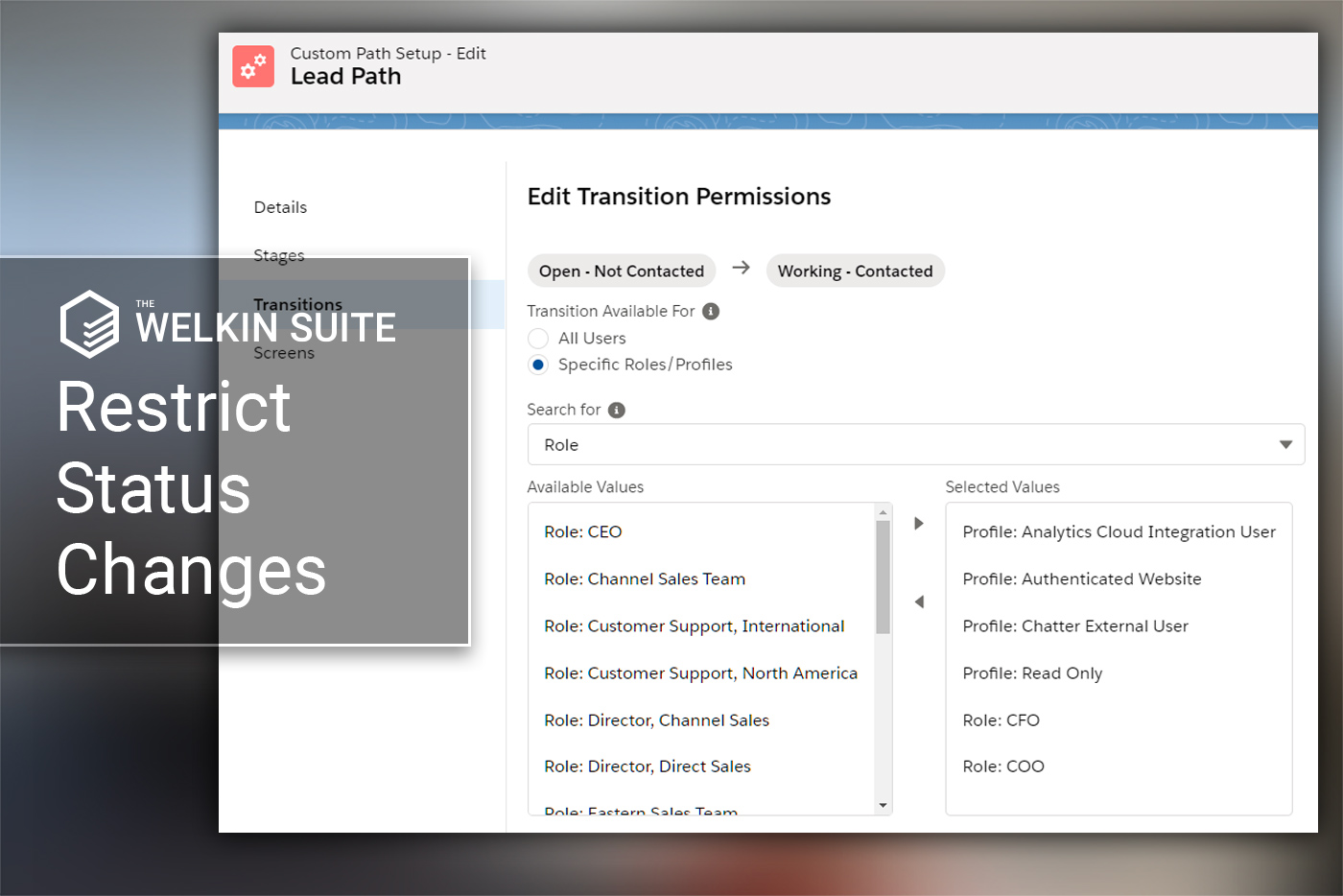
Creating and editing any path in Welkin's Customizable Path, you can separately restrict each transition to certain profiles and/or roles. You just need to open your Path configuration, switch to the Transitions tab, and click on the "Configuration" for transition's permissions. It takes less than a couple of hours to fully configure Welkin's Customizable Path, including proper permissions, whereas doing the same in the "common way" usually takes a couple of days + a lot of future maintenance.
Don't hesitate to refine your Salesforce organization - get Welkin’s Customizable Path from the AppExchange!
Problem #2 - You have fields that are required on certain status changes, but optional otherwise
Another common pain that most Salesforce users and partners face - conditionally required fields. You don't care about the "Reason Lost" field while completing the Opportunity, but you do care about it if you lose it. Or, let's say, you manage your H.R. progress in Salesforce and there's no need in the "Start Date" when rejecting a candidate, but it is essential when an offer is accepted. You can probably name at least ten examples on your Org (if no - give us a shout, please).
So what shall we do? We can either constantly remind our Sales/H.R. teams to fill out corresponding fields (why using CRM then if we can't help our users with that?) or add another dozen (or two) of validation rules. Even if your Salesforce admins have a black belt in managing validations and you don't care about getting drown in them - your users won't be happy when they get a bunch of validation errors trying to save a record. We call this "error-driven UX", or, simply put, "bad and not productive UX". ![]()
Instead, you can use Welkin's Customizable Path to configure transition screens with all relevant fields. Just take a look at how easy it is to do it - no code, no validation rules, no expressions, no mess:
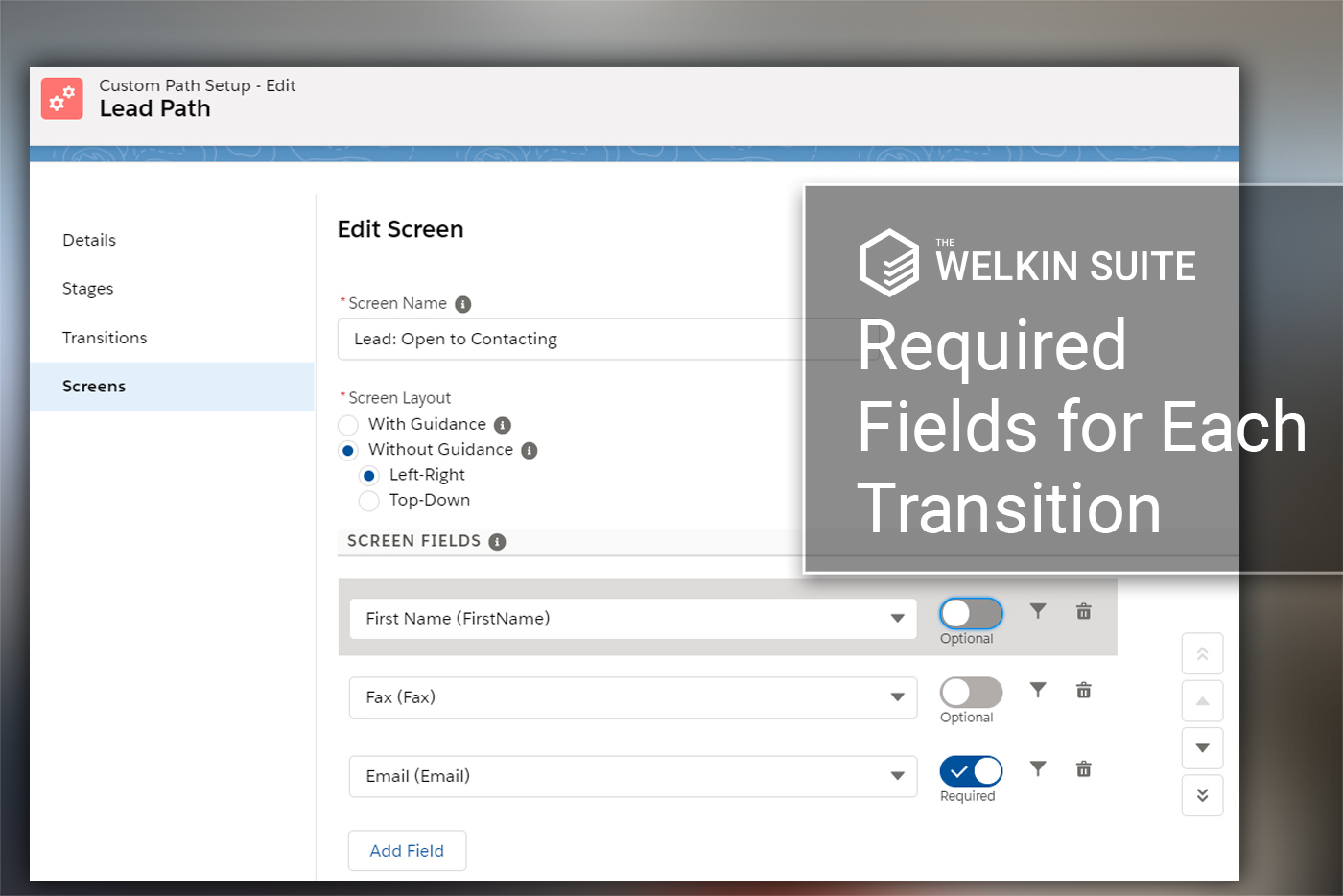
Welkin's Customizable Path provides a simple way to create "screens" for each transition out of the box, including:
-
a list of fields to be filled - both optional and mandatory
-
guidance (it can be different when transferring from New to Lost and when transferring from Legal to Lost)
-
even a way for you to build a 2-step status change with 2nd screen having fields that are shown or hidden depending on values in fields from the 1st screen
So, just to summarize – the only thing you need to do is create a screen as shown on the screenshot above and assign it to the required transitions (as shown on the screenshot below). Creating a screen with 10 fields and even assigning it to 5 different transitions takes less time than just creating one validation rule to make a field mandatory. It's a huge timesaver.
Now it's time for you to save your time and improve your Salesforce organization with Welkin’s Customizable Path from the AppExchange!
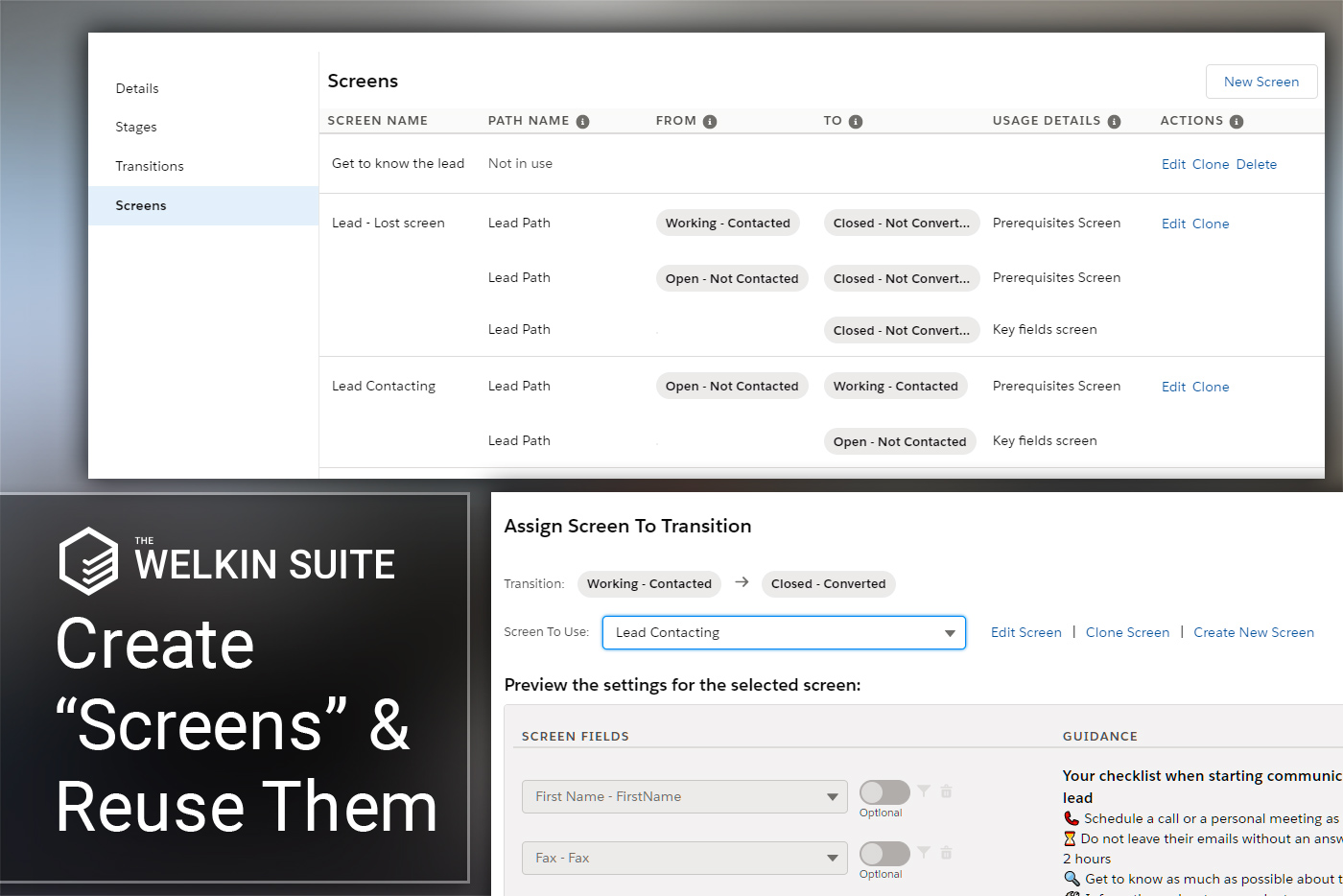
Problem #3 - You have more than 5 key fields that you want to show your users
It is possible that a couple of years ago, Marc Benioff paraphrased the classic by Bill Gates, saying, "5 key fields ought to be enough for anybody", otherwise we don't see a reason for enforcing such a hard limitation… Yes, yes, we understand that if we have 100 key fields - they are… umm… actually, not so "key", but having 7, or 9, or even 15 fields might be necessary in some cases.
So in Welkin's Customizable Path, we do not limit the number of fields you can include in different types of screens - Key fields, Transition Prerequisites, and Transition details. Add here that your "Key fields" screen is shown only for the current status, while the "Transition Prerequisites" screen is displayed when you select a different status - there's even a chance that with more types of screens here, you might need fewer fields in each of them compared to the Salesforce Path.
Anyway here’s a screenshot that you expect - Welkin’s Customizable Path transition screen with a bit more than 5 fields on it.
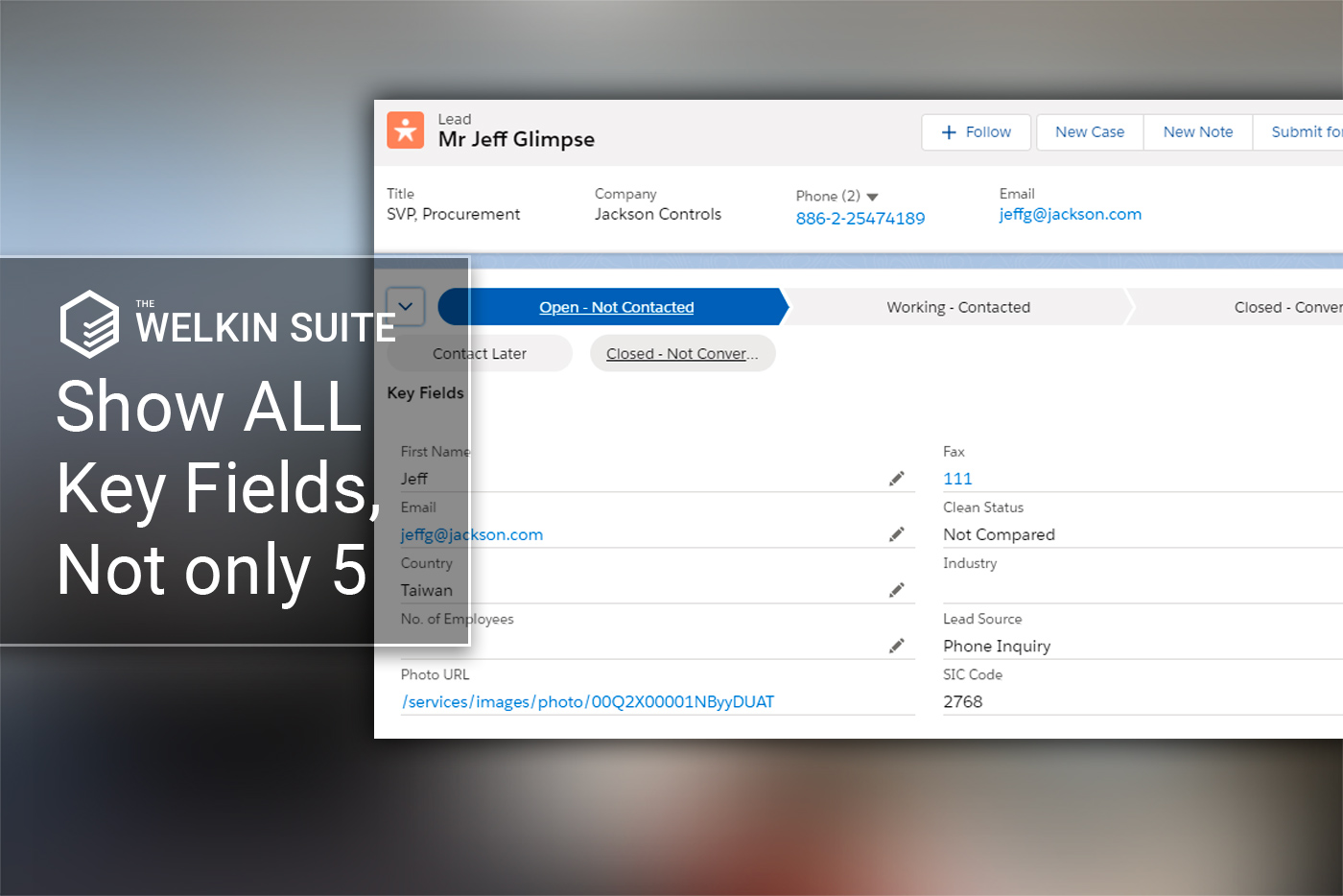
Problem #4 - You have complicated processes and your users don't always remember them
We often encounter one of the two "strategical" approaches related to the way businesses split their processes into stages:
-
Minimum steps for "better flexibility", so that no one can forget "the flow" (read Open → Working → Closed)
-
Ultimately atomic steps for "better control", so that no one needs to think what to do, as it's explained in statuses (read Open → Website analyzed → Key contacts identified → Products of interest → Competitors identified → Introduction email sent → ∞)
Maybe not exactly these strategies but somewhere close to them ![]() . Anyway, the golden ratio is somewhere in-between. If you have more than 3 stages - users might not remember each arrow in the complicated stage transition diagram that your Business Analysts compiled. And that's ok - they know and remember a lot of other stuff that's important to keep succeeding in their business.
. Anyway, the golden ratio is somewhere in-between. If you have more than 3 stages - users might not remember each arrow in the complicated stage transition diagram that your Business Analysts compiled. And that's ok - they know and remember a lot of other stuff that's important to keep succeeding in their business.
Let's examine what tools we have to guide our users through the process. Oh, cool, good old validation rules… How many of them do we already have? And again, that incredibly motivating "error-driven UX"?
It seems to be much more efficient to grab your user's hands and help them going through the flow. For each and every record they process. Without you, of course.
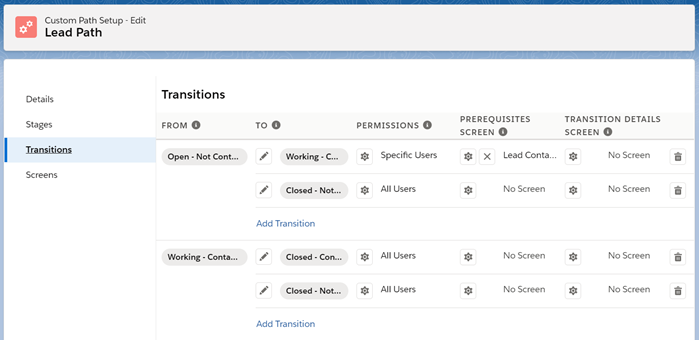
What we do with Welkin’s Customizable Path to achieve this - in the "Transitions" tab for a Path, we need to locate our "source" status in the first column and click on the "Add Transition" button nearby. In this way, we can add all allowed transitions between statuses without involving any other tools. The great benefit of such an approach is that it makes it very easy to implement any stage transition diagram in this way - you just add transitions one by one and you're done.
Once you've configured transitions, your users will automatically see allowed transitions highlighted and clickable, while transitions that are not available will be disabled. As a result, they will know in advance what they're supposed to do with the record.

Problem #5 - You are heavily using Approvals, and your users complain about the bad visibility of locked records
Using Salesforce Approvals is a great way to support your Salesforce users with some assistance from their managers or other team members. There's almost everything great with Salesforce Approvals other than the fact that users need to pay extra attention to spot that a record is locked as a part of an Approval process.
However, in Welkin's Customizable Path, you don't even need to do anything about that. The Path component automatically detects if a record is locked and displays this for users in the most important part of a record page - in the Path!
It’s time to improve your Salesforce org today
Although we've described only 5 picks for situations when Welkin's Customizable Path can improve the current situation right away, there are many other tasks and challenges where it can benefit you and your users a lot.
Don’t waste your time - install the package from AppExchange and implement the ultimate Path experience in your organization. You don't need a detailed user guide, and there's no rocket science involved - you will get the first meaningful result in 30 minutes (including 10 minutes that you've already spent on this article).

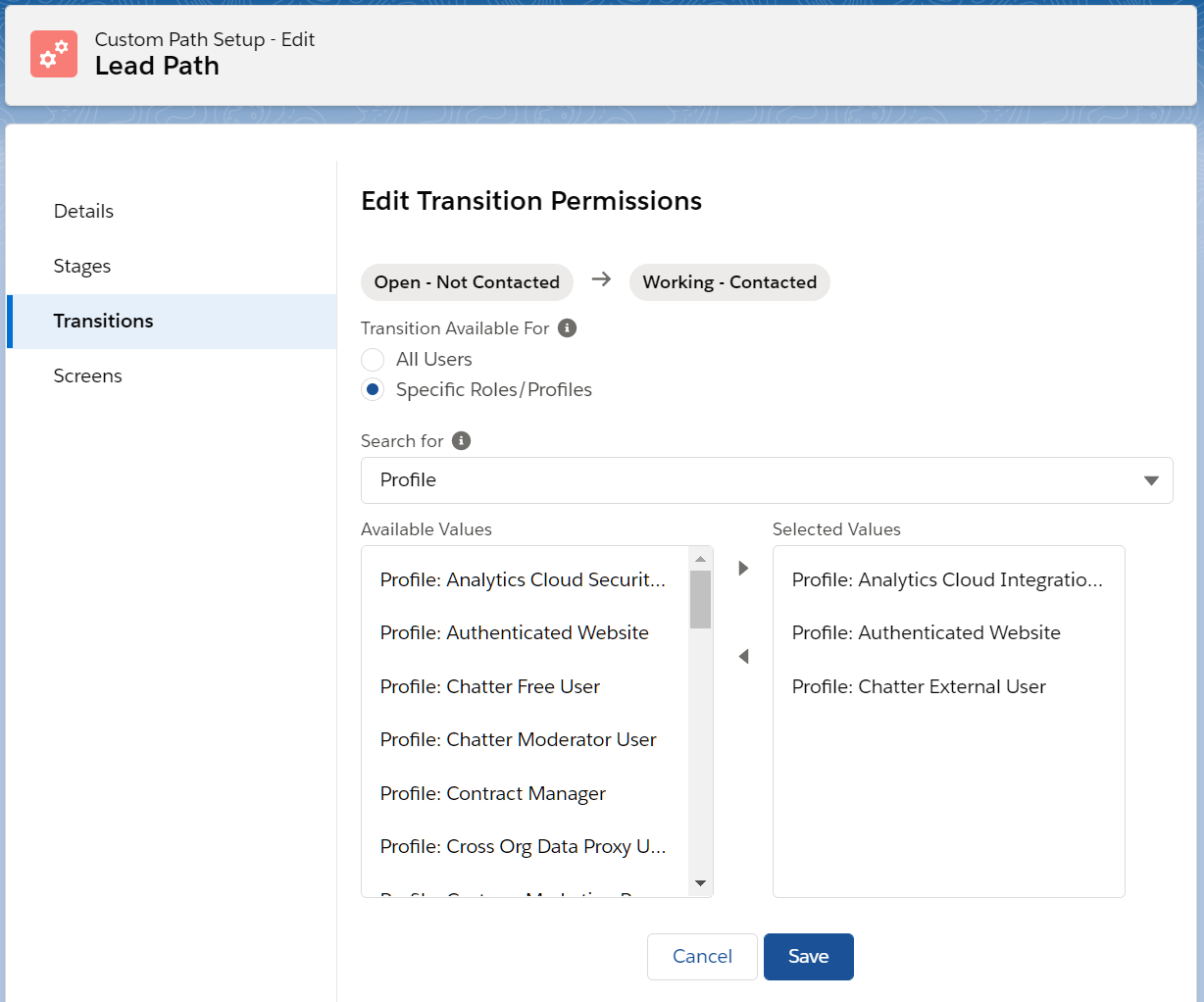












By the way, Wedding season is such a magical time filled with love, joy, and beautiful memories. It's the perfect opportunity to witness and celebrate the beginning of a lifelong journey for couples. And what better way to preserve those precious moments than through wedding photography? These timeless images capture the essence of the day, the emotions, https://www.purpleweddingfilms.com and the little details that make each wedding unique. From the heartfelt vows to the joyous celebrations, wedding photography allows us to relive those cherished moments for years to come.
https://welkinsuite.com/blog/top-5-problems-welkin-s-customizable-path-can-solve-making-your-users-feel-happier/
U4GM - How to Beat Elden Ring Without Magic: A Practical Guide for Melee Builds
Elden Ring is an expansive and challenging action RPG that rewards persistence, skill, and adaptability. Many players choose to wield powerful sorceries or incantations, but if you're determined to conquer the Lands Between without a single spell, you're in good company. Beating Elden Ring without magic isn't just possible—it's one of the most rewarding ways to experience the game. In this guide, we'll explore the essentials for melee-only builds, how to optimize your use of Elden Ring runes:https://www.u4gm.com/elden-ring-runes, and how to stay ahead of the curve—especially if you’re looking to buy Elden Ring runes Xbox players can rely on.
1. Choosing the Right Class
If you're going for a no-magic run, start strong with a class built for close combat. The Vagabond, Hero, and Samurai are all excellent options. These classes have high strength, dexterity, and vigor stats, which are key for survivability and melee damage.
Your focus should be on scaling physical damage and boosting health and stamina. This means prioritizing:
Strength or Dexterity (depending on your weapon choice)
Vigor (for more HP)
Endurance (for stamina and equipment load)
2. Weapon Selection and Upgrades
Without magic, your weapon becomes your main tool for survival and success. Choose weapons that scale well with your chosen stats. Colossal weapons, katanas, greatswords, and curved swords are all viable.
Don't forget to upgrade your weapon regularly using Smithing Stones, which can make a huge difference in damage output. Infusions like Bleed or Fire can also add unique advantages depending on your enemy.
Ashes of War are another important mechanic for non-magic users. Skills like Flaming Strike, Lion’s Claw, and Sword Dance can make your build even more deadly. Experiment with different Ashes to find a combat style that suits you best.
3. Managing Elden Ring Runes Efficiently
Runes are the lifeblood of your progression in Elden Ring. They’re used to level up, purchase items, and upgrade gear. Every rune counts, so avoid unnecessary deaths, always recover dropped runes, and consider farming locations like:
The Stormveil Castle outskirts
Mohgwyn Palace (late-game, high yield)
Caelid’s War-Dead Catacombs
If you're short on time or want a head start, many players choose to buy Elden Ring runes Xbox:https://www.u4gm.com/elden-ring-runes from reputable sources. It’s essential to do this safely—choose a provider known for legitimacy, fast delivery, and security. Platforms like U4GM are trusted by many players who want to skip the grind without compromising the integrity of their playthrough.
4. Combat Strategy Without Magic
Melee combat in Elden Ring is about timing, spacing, and stamina management. Here are key tips:
Learn boss patterns: Dodging and blocking effectively depends on knowing your enemy’s moves.
Use terrain to your advantage: Hide behind structures or use elevation to limit enemy movement.
Buffs and consumables: Just because you’re not using magic doesn’t mean you can’t use items. Greases, talismans, and physical buffs can give you an edge.
Shield users will benefit from 100% physical block shields like the Brass Shield, while agile builds might prefer two-handing weapons and focusing on dodge rolls.
5. Key Items to Support Your Build
Even without spells, the game provides tools to enhance melee combat:
Radagon’s Scarseal/Sourceal: Boosts Strength.
Green Turtle Talisman: Increases stamina recovery.
Claw Talisman: Enhances jump attack damage.
Stock up on Smithing Stones, resins, and consumable buffs to maintain a combat edge throughout the game.
6. Bosses to Watch Out For
Some bosses are particularly tough for melee builds:
Rennala, Queen of the Full Moon: Her magic-focused combat is hard to close in on. Use fast dodges and Spirit Ash distractions.
Maliketh, the Black Blade: Aggressive and mobile, he punishes bad timing. Learn his patterns and stay aggressive.
Radagon and Elden Beast: The final fight demands precision and patience—conserve flasks and stay mobile.
Beating Elden Ring without magic is a testament to skill, strategy, and grit. With the right build, smart rune management, and an understanding of the game’s systems, you can absolutely thrive as a pure melee warrior. Whether you’re farming for hours or choosing to buy Elden Ring runes Xbox users find reliable, the most important part is enjoying the journey and owning your personal playstyle.
The Bradley Cooper Hangover Suit from William Jacket is a stylish and versatile black suit inspired by Bradley Cooper’s character, Phil Wenneck, in The Hangover film series. This suit is designed to offer both comfort and a sharp appearance, making it suitable for various formal occasions.https://www.williamjacket.com/product/bradley-cooper-hangover-suit/